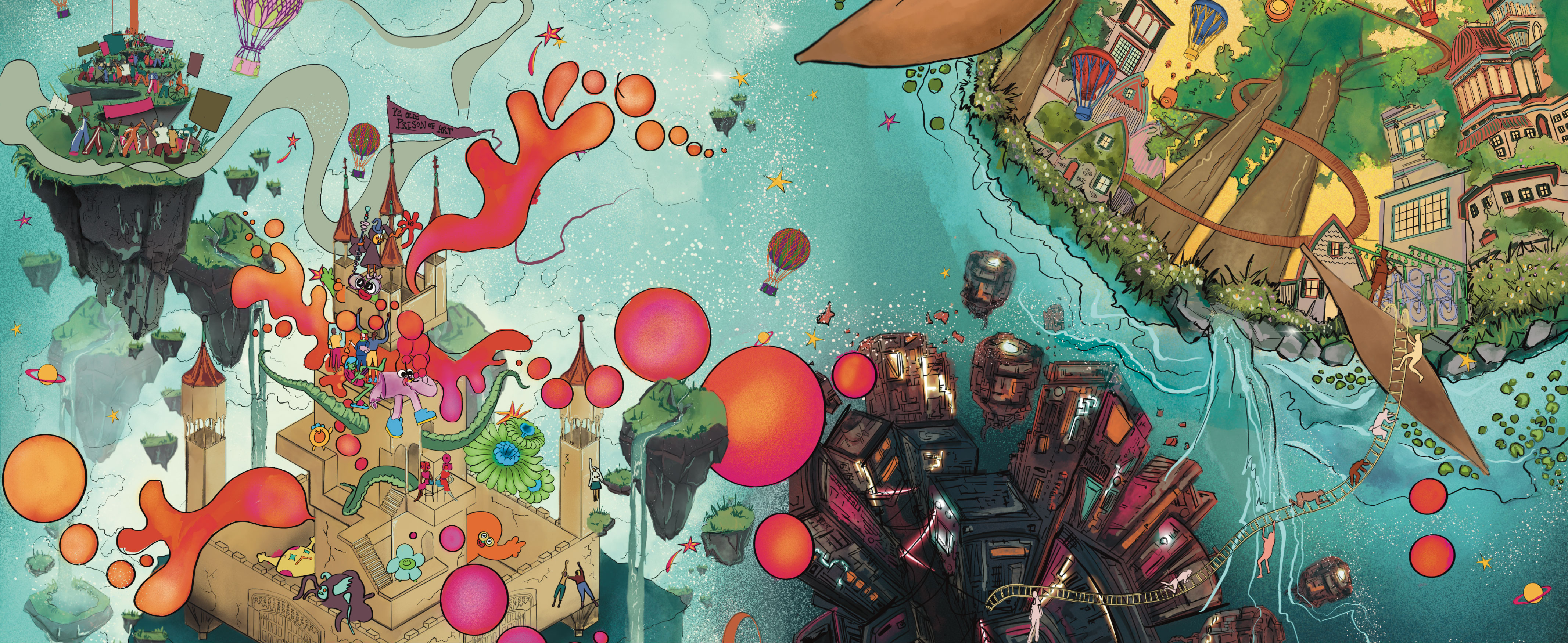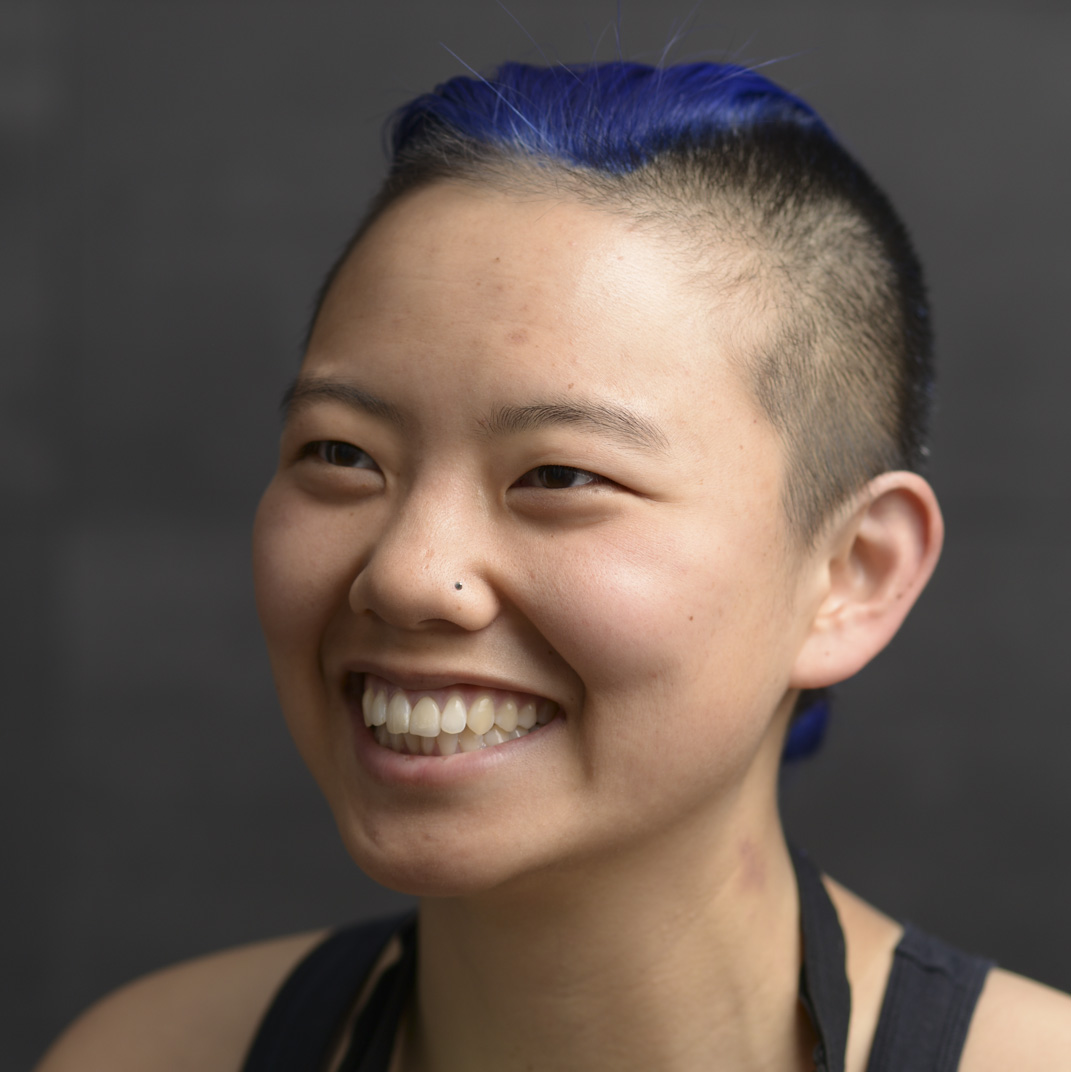A Solarpunk Nervous System: References and Further Reading

Illustration credit: Amelia Goldie.
References and Further Reading for the article “A Solarpunk Nervous System”, by Danbee Kim, Xiao Xiao, and Amelia Goldie. The full article will be published in Vector, the critical magazine of the British Science Fiction Association (link to be posted soon!).
References:
[1] Swanson, Larry W. Brain architecture: understanding the basic plan. Oxford University Press, 2012.
[2] Kim, Danbee, and Adam R. Kampff. “Neuroscience Does Design: What the Brain’s Architecture Can Teach Architects.” Architectural Design 90.6 (2020): 94-99.
[3] Kawai, Risa, et al. “Motor cortex is required for learning but not for executing a motor skill.” Neuron 86.3 (2015): 800-812.
[4] Lopes, G., et al. “A robust role for motor cortex.” bioRxiv. (2017): 058917. Retrieved from www.biorxiv.org/content/10.1101/058917v2
[5] Sagan, Carl. “Growing up with science fiction.” The New York Times (1978).
[6] Armstrong, Paul B. “Neuroscience and the Social Powers of Narrative: How Stories Configure Our Brains.” English Language and Literature 64.1 (2018): 3-24.
[7] Terry, Sharon F., and Anne Marie Westreich. “A Role for Storytelling in Improving Consumer Understanding of Genetic Testing.” Genetic testing and molecular biomarkers 23.1 (2019): 1-2.
[8] Yuan, Ye, Judy Major-Girardin, and Steven Brown. “Storytelling is intrinsically mentalistic: A functional magnetic resonance imaging study of narrative production across modalities.” Journal of cognitive neuroscience 30.9 (2018): 1298-1314.
[9] Lindahl, Carl. “Dream Some More: Storytelling as Therapy.” Folklore 129.3 (2018): 221-236.
[10] Beachman, Lisa. Psychological perspectives on narrative and storytelling. Diss. Auckland University of Technology, 2018.
[11] Andersen, Mark B., and Andreas Ivarsson. “A methodology of loving kindness: How interpersonal neurobiology, compassion and transference can inform researcher–participant encounters and storytelling.” Qualitative Research in Sport, Exercise and Health 8.1 (2016): 1-20.
[12] Zak, Paul J. “Why inspiring stories make us react: The neuroscience of narrative.” Cerebrum: the Dana forum on brain science. Vol. 2015. Dana Foundation, 2015.
[13] Graeber, David. DEBT: The First 5,000 Years. Melville House, 2010.
[14] Bianconi, Eva, et al. “An estimation of the number of cells in the human body.” Annals of human biology 40.6 (2013): 463-471.
[15] Sender, Ron, Shai Fuchs, and Ron Milo. “Revised estimates for the number of human and bacteria cells in the body.” PLoS biology 14.8 (2016): e1002533.
[16] Gilbert, Jack A., et al. “Current understanding of the human microbiome.” Nature medicine 24.4 (2018): 392-400.
[17] Wade, William G. “The oral microbiome in health and disease.” Pharmacological research 69.1 (2013): 137-143.
[18] Furness, John B., and Martin J. Stebbing. “The first brain: Species comparisons and evolutionary implications for the enteric and central nervous systems.” Neurogastroenterology & motility 30.2 (2018): e13234.
[19] Keijzer, Fred, Marc Van Duijn, and Pamela Lyon. “What nervous systems do: early evolution, input–output, and the skin brain thesis.” Adaptive Behavior 21.2 (2013): 67-85.
[20] Le Guin, Ursula K. The Dispossessed : An Ambiguous Utopia. Harper & Row, 1974.
[21] Robinson, Kim Stanley. Red Mars. Bantam Books, 1993.
[22] Butler, Octavia. Bloodchild And Other Stories. Seven Stories Press, 2003.
[23] Mateos-Aparicio, Pedro, and Antonio Rodríguez-Moreno. “The impact of studying brain plasticity.” Frontiers in cellular neuroscience 13 (2019): 66.
[24] Edwards, Betty. “Drawing on the Right Side of the Brain.” CHI 98 Conference Summary on Human Factors in Computing Systems. 1998.
[25] Blake, Ran. “Primacy of the Ear.” USA: Ran Blake (2010).
[26] Stanislavski, Constantin. An actor prepares. Routledge, 1989.
[27] Minsky, Marvin. Society of mind. Simon and Schuster, 1988.
[28] Vaisvaser, Sharon. “The Embodied-Enactive-Interactive Brain: Bridging Neuroscience and Creative Arts Therapies.” Frontiers in Psychology 12 (2021): 1495.
[29] Teixeira-Machado, Lavinia, Ricardo Mario Arida, and Jair de Jesus Mari. “Dance for neuroplasticity: A descriptive systematic review.” Neuroscience & Biobehavioral Reviews 96 (2019): 232-240.
[30] Kimmerer, Robin. Braiding sweetgrass: Indigenous wisdom, scientific knowledge and the teachings of plants. Milkweed editions, 2013.
Further Reading (A Solarpunk Primer)
- An Introduction to Solarpunk: https://solarpunks.net/post/187176200722/an-introduction-to-solarpunk
- 9 Reasons Why Solarpunk is the Future: https://solarpunkmagazine.com/2021/10/24/9-reasons-why-solarpunk-is-the-future/
- What Sets Solarpunk Apart? Alternative vs Possible Futures: https://solarpunkmagazine.com/2021/11/02/what-sets-solarpunk-apart-alternative-vs-possible-futures/
- A Metamodern Solarpunk Manifesto: https://www.joelightfoot.org/post/the-metamodern-solarpunk-manifesto
- What is Solarpunk? By Solarpunk Stories: https://www.solarpunkstories.com/what-is-solarpunk

Leave a Comment